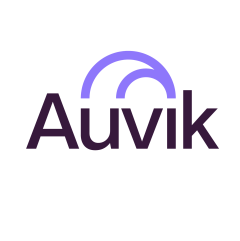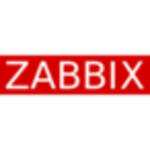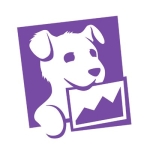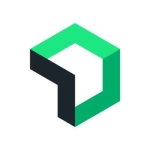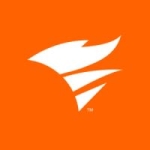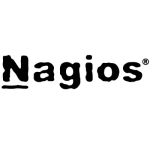What is our primary use case?
Our use cases would be mapping our network automatically, monitoring events to get stats and trends, spotting any impending issues before they get noticed by our users so we can address them, and doing device reconfiguration.
How has it helped my organization?
Auvik automatically updates network topology. Our network team members in our operations all dig it. It is just something that makes finding devices easy, e.g., if you don't necessarily remember where it is, the IP, and so on. Especially if something needs to be reconfigured, it makes it really easy to go to the LAN or network in question, find the device, remotely get into it, and then make whatever necessary changes.
The goal is to have Auvik help us put out fires before people or end users even know that there is a problem. That hasn't really happened that much, other than power outages where we can get somebody en route, which makes us look like we know what we are doing.
What is most valuable?
It is kind of a toss up between its nice interface and ease of deployment.
It is pretty easy to use for the type of product that it is and what its use case is. Anyone who is going to use such a thing generally should have a fair bit of knowledge about networking, devices, etc.
Auvik is excellent when it comes to its network discovery capabilities. It has good stats. We can look at our network and visually see what is going on, if there are any issues, and just the entire topography of how it is laid out. It generates the network map automatically, so that is not something we have to go do. It just lets you see things, maybe not necessarily at a glance, but close to it.
We were able to trim down and get a decent signal-to-noise ratio on notifications and events, because these devices generate a ton of telemetry. Otherwise, it's like things are always crying, "Wolf!" That has been a problem, not just in this niche, but other categories as well. If you get too much stuff that isn't anything to look at, then you will quit looking at it.
The automation of the network mapping enables junior network specialists to resolve issues directly, freeing up senior-level team members to perform higher-value tasks. They can see if it is something as simple as a power issue in a wing of a building. This lets them pick the low hanging fruit. Then, if a configuration needs a more skilled person, they can easily escalate it.
There are a couple things that you need to do, and then Auvik provides automated, out-of-the-box device configuration backups. It backs up the configurations, and that has been awesome, which makes it possible and practical. Otherwise, it is really difficult because we would then have to go from device to device, get it to spit out its config, copy it to the clipboard, paste it to a file, and organize it all. That is all now automatic, which is great.
Generally, once stuff gets configured, it is fine. Previously, it was a matter of remembering to get the copy of the config and save it someplace. Depending upon the workload, sometimes that got put on the back burner. Now, because of this solution's automatic, out-of-the-box device configurations, I don't worry about it.
What needs improvement?
I would like firmware/software updates for hardware, for at least switches and routers. I already have the feature request in, and it is on their list of things to try and do. Cisco stuff has been notoriously and historically kind of a pain to do, and that is what we use primarily. So, that would be a wonderful thing to get, as it is a device-by-device process. It would be nice to be able to get through that at least in a less fiddly way. It is a pretty manual process now.
For how long have I used the solution?
We have been using it for a little less than a year.
What do I think about the stability of the solution?
It is very stable. We have had one very minor incident with logins. They had that resolved in 15 minutes to half an hour, tops.
There is almost no maintenance required from our staff. Compared with other solutions that I have used, the level of maintenance affecting my operations is much better with Auvik. I feel like I can trust it a little more than some of the things that I configured myself. I just never had the time to polish those other solutions out the way that they really needed to be done.
What do I think about the scalability of the solution?
I haven't run into any issues with it. I suspect it could handle multiples of more devices than we have in our network. It doesn't seem to break a sweat. Hopefully, they have enough scalability on their end that it won't impact us unless other customer stuff impacts us.
How are customer service and support?
The technical support has been great.
Which solution did I use previously and why did I switch?
We have used different open source things, like Nagios, but they were just so configuration heavy. We basically got rid of them. We didn't have anything in a while prior to getting this solution, but now we have Auvik. I do kind of miss having that early warning system, but I just didn't have the time to configure anything, because that is a very non-trivial thing for a lot of those systems. Having sufficient time to be able to spend on it, that was really the problem. This alleviated that completely.
I happened to run across an ad somewhere, and it's like, "Hey, I want to look at that. If this solution is half as good as it claims to be, this might be for us," and if it was at a reasonable cost.
How was the initial setup?
The deployment was very simple. The network discovery accuracy was great. Other systems like this that I have worked with required a lot of configuration. This did not take much effort at all. The initial deployment was quick. We had something kind of up and running in an hour, if that long.
What was our ROI?
Auvik has decreased our mean time to resolution. Luckily, we have a pretty stable network; we don't have a lot of issues. However, it can be trivial to just get to a device. For example, if we have to change a port setting or something on a switch from a printer to a phone or VLAN assignments, it is now quick and easy. Assuming everything goes well once you get to the device, it probably cuts the, "What was that device IP?" thing down by 80%.
We have saved more in time and efficiency than any hard monetary savings.
It took us just a few days to get a return on value from the whole implementation.
What's my experience with pricing, setup cost, and licensing?
The pricing is by device. We have 75 devices, which is a little more than we really need. With school and volume discounts, it is still a little over $16,000 annually. Our WiFi access points are not being billed, but all our switches and routers are.
Usually, I'm cheap. We are a school so I have to be cheap. Therefore, when there is an open source solution, I am usually reluctant to look at commercial things. Now, with a little more leadership support as well as technology becoming more mission-critical than ever before, it is part of the deliverable to produce an educated student. So, they are willing to invest more. It wasn't crazy expensive, but in the past, it would've been a hard sell.
Which other solutions did I evaluate?
In addition to Auvik, I also looked at SolarWinds and HPE OneView, which was breathtakingly expensive. We mostly went with Auvik because of its ease of use for non-technical people. The ease of its configuration and deployment was big. Those were huge factors. We have added so much technology of all sorts in the last year or two that mental bandwidth has become an issue. For example, how much time can I even hope to spend on a given project, which might suffer greatly from mental interruptions.
This solution has stopped me from looking at other stuff.
What other advice do I have?
I don't want to really add any more complexity to our environment, but if we do, it'll get picked up and mapped automatically. So, once we get the device online and configured, it will just show up.
Auvik has been really handy. I really can't say enough good things about it. I have just been really impressed with the quality of the product, support, and training. It just works well.
I see a lot of value in Auvik. I was really happy with it very early on. I would rate this solution as 10 out of 10. I can't say enough good things about this solution.
Disclosure: PeerSpot contacted the reviewer to collect the review and to validate authenticity. The reviewer was referred by the vendor, but the review is not subject to editing or approval by the vendor.

